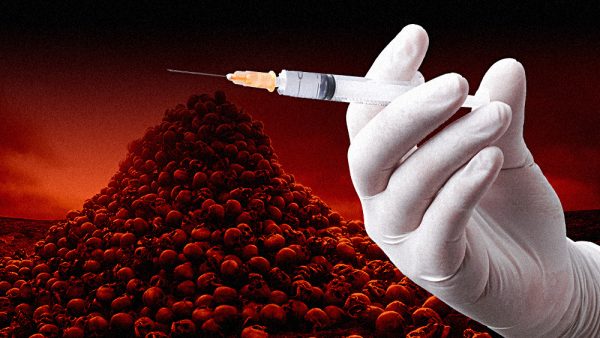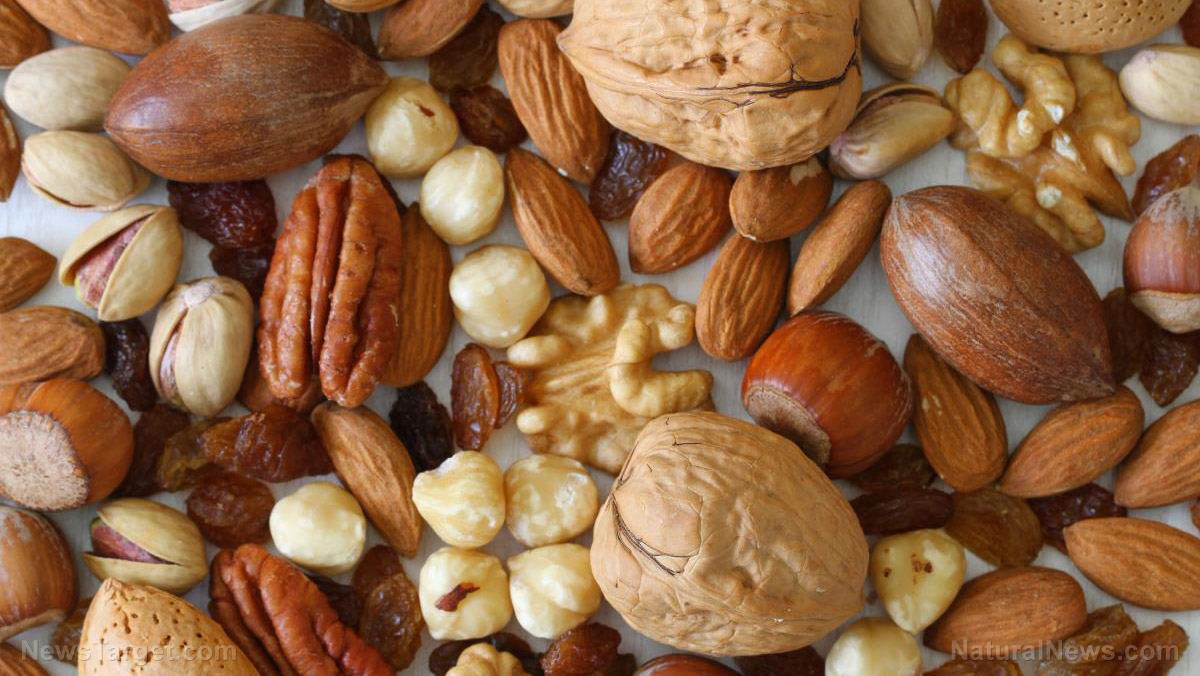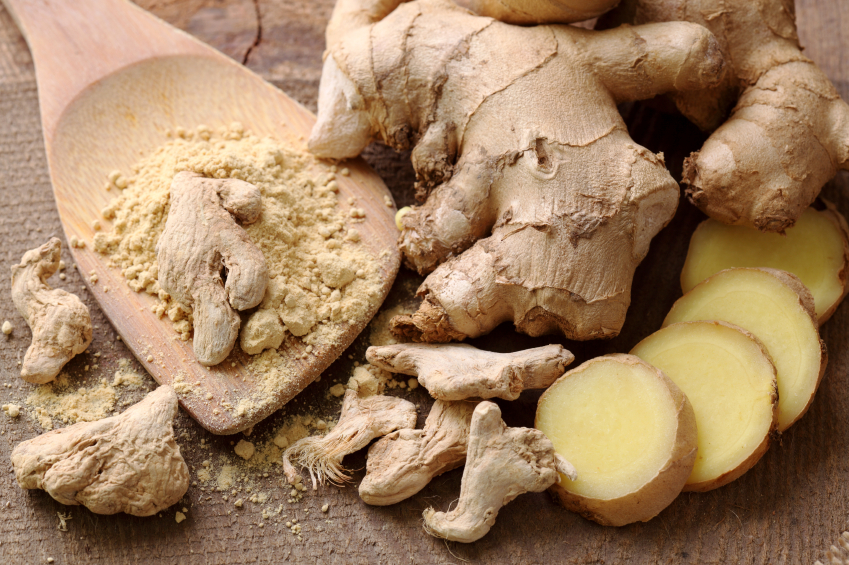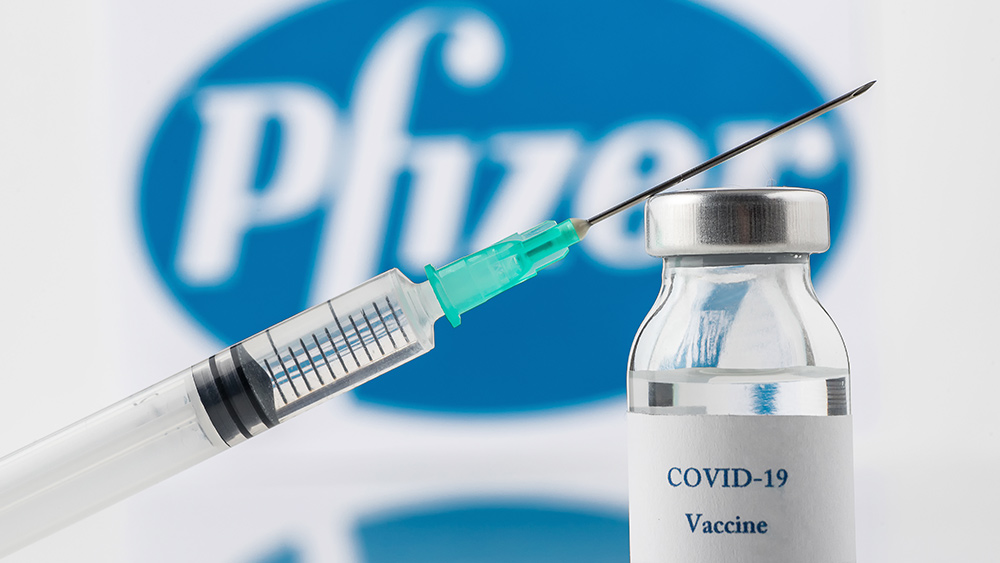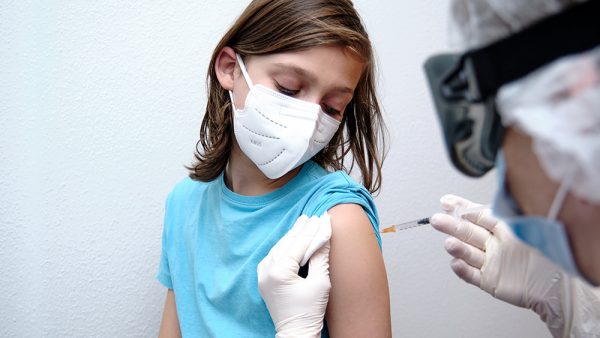 Parler
Parler Gab
Gab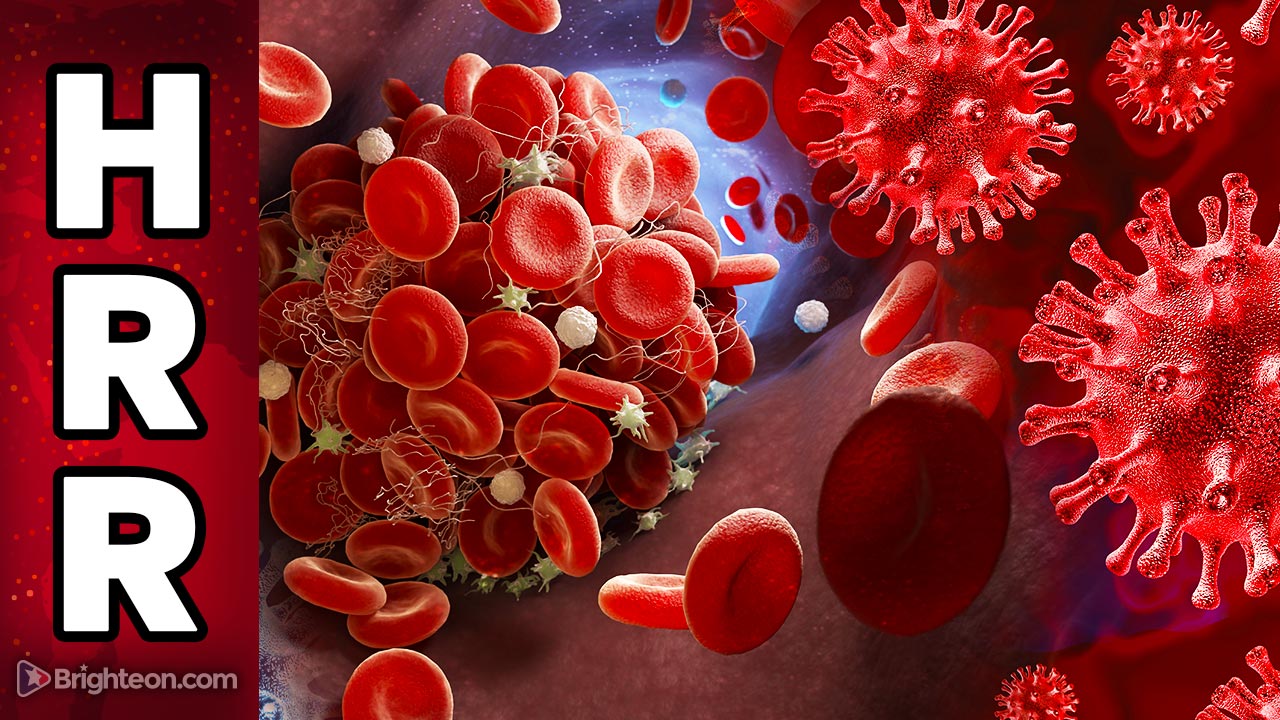
 Figure 2.Cell lysis assays demonstratedin vitroinactivation potential of Acetylcysteine and Brome-lain combined (BromAc) against SARS-CoV-2. Cell viability was measured by cell staining withNeutral Red, where optical density (OD) is directly proportional to viable cells. Low OD wouldsignify important cell lysis due to virus replication.
The conclusion of the study explains how this combination of Bromelain and Acetylcysteine alters the structure of the SARS-CoC-2 glycoproteins, rendering them unable to attack human cells: (emphasis added)
The combination of Bromelain and Acetylcysteine, BromAc, synergistically inhibited the infectivity of two SARS-CoV-2 strains cultured on Vero cells. Protein confirmation and its molecular properties are dependent on its structural and geometric integrity, which are dependent on both the peptide linkages and disulfide bridges. Acetylcysteine, as a good reducing agent, tends to reduce the disulfide bridges and hence alter the molecular properties of most proteins. This property has been widely exploited in the development of several therapies (chronic obstructive pulmonary disease, allergic airways diseases,cystic fibrosis, pseudomyxoma peritonei, etc.) [20,23–27]. More recently, Acetylcysteine has been used in the development of therapies for respiratory infections such as influenza and COVID-19 [28–30], where the integrity of the spike protein is vital for infection [12,13]. A hypothesized mechanism of action could be the unfolding of the spike glycoprotein and the reduction of its disulfide bonds.
A direct mechanical action against this spike protein is a different treatment strategy in comparison to most of the existing antiviral drugs, which prevents viral entry in host cells rather than targeting the replication machinery. BromAc acts as a biochemical agent to destroy complex glycoproteins. Bromelain’s multipotent enzymatic competencies, dominated by the ability to disrupt glycosidic link-ages, usefully complement Acetylcysteine’s strong power to reduce disulfide bond.
The potential of BromAc on SARS-CoV-2 spike and envelope proteins stabilized by disulfide bonds was examined and found to induce the unfolding of recombinant spike and envelope proteins by reducing disulfide stabilizer bridges. BromAc also showed an inhibitory effect on wild-type and spike mutant SARS-CoV-2 by inactivation of its replication capacity in vitro. Hence, BromAc may be an effective therapeutic agent for early SARS-CoV-2infection, despite mutations, and even have potential as a prophylactic in people at high risk of infection.
Importantly, it should be noted that these tests were carried out in vitro, and there have not been any human clinical trials on this combination that I'm aware of, since the NIH would never fund anything other than Big Pharma drugs and vaccine research. Consider the information presented here as a theoretical route action that warrants further exploration.
Nevertheless, given that bromelain and acetylcysteine are widely consumed as nutritional supplements right now -- and are readily available and affordable -- these solutions warrant consideration as low-cost, low-risk interventions that may prove to help save lives.
Figure 2.Cell lysis assays demonstratedin vitroinactivation potential of Acetylcysteine and Brome-lain combined (BromAc) against SARS-CoV-2. Cell viability was measured by cell staining withNeutral Red, where optical density (OD) is directly proportional to viable cells. Low OD wouldsignify important cell lysis due to virus replication.
The conclusion of the study explains how this combination of Bromelain and Acetylcysteine alters the structure of the SARS-CoC-2 glycoproteins, rendering them unable to attack human cells: (emphasis added)
The combination of Bromelain and Acetylcysteine, BromAc, synergistically inhibited the infectivity of two SARS-CoV-2 strains cultured on Vero cells. Protein confirmation and its molecular properties are dependent on its structural and geometric integrity, which are dependent on both the peptide linkages and disulfide bridges. Acetylcysteine, as a good reducing agent, tends to reduce the disulfide bridges and hence alter the molecular properties of most proteins. This property has been widely exploited in the development of several therapies (chronic obstructive pulmonary disease, allergic airways diseases,cystic fibrosis, pseudomyxoma peritonei, etc.) [20,23–27]. More recently, Acetylcysteine has been used in the development of therapies for respiratory infections such as influenza and COVID-19 [28–30], where the integrity of the spike protein is vital for infection [12,13]. A hypothesized mechanism of action could be the unfolding of the spike glycoprotein and the reduction of its disulfide bonds.
A direct mechanical action against this spike protein is a different treatment strategy in comparison to most of the existing antiviral drugs, which prevents viral entry in host cells rather than targeting the replication machinery. BromAc acts as a biochemical agent to destroy complex glycoproteins. Bromelain’s multipotent enzymatic competencies, dominated by the ability to disrupt glycosidic link-ages, usefully complement Acetylcysteine’s strong power to reduce disulfide bond.
The potential of BromAc on SARS-CoV-2 spike and envelope proteins stabilized by disulfide bonds was examined and found to induce the unfolding of recombinant spike and envelope proteins by reducing disulfide stabilizer bridges. BromAc also showed an inhibitory effect on wild-type and spike mutant SARS-CoV-2 by inactivation of its replication capacity in vitro. Hence, BromAc may be an effective therapeutic agent for early SARS-CoV-2infection, despite mutations, and even have potential as a prophylactic in people at high risk of infection.
Importantly, it should be noted that these tests were carried out in vitro, and there have not been any human clinical trials on this combination that I'm aware of, since the NIH would never fund anything other than Big Pharma drugs and vaccine research. Consider the information presented here as a theoretical route action that warrants further exploration.
Nevertheless, given that bromelain and acetylcysteine are widely consumed as nutritional supplements right now -- and are readily available and affordable -- these solutions warrant consideration as low-cost, low-risk interventions that may prove to help save lives.
Dr. Bryan Ardis reveals a potential solution to halt artificially induced fibrinogen clotting
Yesterday I joined Dr. Bryan Ardis on the Ba'al Busters show to talk about solutions. About 30 minutes into the show, Dr. Ardis unveiled a short presentation that shows how glycyrrhizin, an active constituent of licorice root, was found to strongly impede venom peptide-induced fibrinogen clotting (which can happen in blood). You can watch that full interview at this link on Brighteon.com. As I pointed out in the interview, glycyrrhizin is also known to protect the liver from Tylenol toxicity (acetaminophen). It is one of the most potent molecules in both western herbal medicine as well as Traditional Chinese Medicine. I cover all this and much more in today's Situation Update podcast: - Dr. Bryan Ardis reveals nutritional solution against fibrinogen clotting - Published scientific study reveals nutritional combo that UNFOLDS spike proteins - WSJ admits CBDCs are coming, whether you're ready or not - suddenly it's no longer a conspiracy - mRNA vaccine push into animal herds is another globalist effort to destroy the meat supply - The truth about "PureBlood" bull semen and sustainability of animal herds - Whistleblower reveals US government is running attacks on America's food infrastructure - Leftists believe COAL mining is bad, but MINERAL mining for "green" energy is good - The green energy infrastructure needs 15+ minerals mined from all over the world - New special report released with Steve Quayle and Mike Adams: "GRID DOWN - What Now?" - College professor claims astrophysics is RACIST - Scotland pushing globalist concept of "20 minute neighborhoods" where you are a prisoner - 90% of online content to be generated by AI in just a few years - Rise of AI systems underscores the importance of being a creative, conscious HUMAN - Interview with Daisy Luther from The Organic Prepper about FRUGAL LIVING Brighteon: Brighteon.com/e726275b-0566-4d5f-baf9-a0e5e8ba69b4 Rumble: Rumble.com/v25z5z8-situation-update-11723-breakthrough-nutritional-solutions-to-halt-clotting..html Bitchute: Bitchute.com/video/uD9bQ1V2R9J3/ Banned.Video: Banned.video/watch?id=63c699689c97e3192587d704 iTunes podcast: Healthrangerreport.com/situation-update-jan-17-2023-breakthrough-nutritional-solutions-to-halt-clotting-and-unfold-spike-proteins Learn more about herbal solutions and remedies at Herbs.news Discover more interviews and podcasts each day at: https://www.brighteon.com/channels/HRreport Follow me on: Brighteon.social: Brighteon.social/@HealthRanger (my breaking news gets posted here first) Telegram: t.me/RealHealthRanger Substack: HealthRanger.substack.com Banned.video: Banned.video/channel/mike-adams Truth Social: https://truthsocial.com/@healthranger Twitter: @MikeAdamsHR Gettr: GETTR.com/user/healthranger Parler: Parler.com/user/HealthRanger Rumble: Rumble.com/c/HealthRangerReport BitChute: Bitchute.com/channel/9EB8glubb0Ns/ Clouthub: app.clouthub.com/#/users/u/naturalnews/posts Join the free NaturalNews.com email newsletter to stay alerted about breaking news each day. Download my current audio books -- including Ghost World, Survival Nutrition, The Global Reset Survival Guide and The Contagious Mind -- at: https://Audiobooks.NaturalNews.com/ Download my new audio book, "Resilient Prepping" at ResilientPrepping.com - it teaches you how to survive the total collapse of civilization and the loss of both the power grid and combustion engines.Ben Armstrong: Data shows globalists are succeeding with their DEPOPULATION plan
By Kevin Hughes // Share
Here are 4 reasons to include tree nuts in your diet
By Olivia Cook // Share
Medicinal plants: 5 Herbs that can help boost respiratory health
By Zoey Sky // Share
Governments continue to obscure COVID-19 vaccine data amid rising concerns over excess deaths
By patricklewis // Share
Tech giant Microsoft backs EXTINCTION with its support of carbon capture programs
By ramontomeydw // Share
Germany to resume arms exports to Israel despite repeated ceasefire violations
By isabelle // Share
